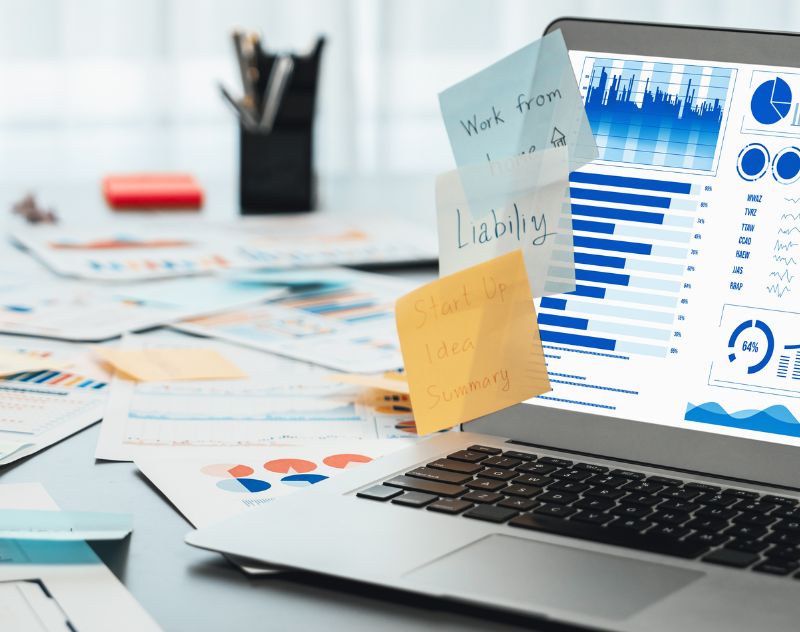Web data scraping is a powerful technique to automatically gather data from websites. With the increasing amount of online data, businesses, researchers, and developers are turning to web scraping to extract valuable insights. In this article, we’ll dive into the key concepts of data scraping, explore its applications, and discuss best practices to ensure you scrape data efficiently and responsibly. Additionally, we’ll introduce Data Goaz, a leading platform in the web scraping space, that can help automate and streamline your data collection processes.
What is Web Data Scraping?
Web data scraping, also known as web harvesting or web scraping, involves extracting data from websites using specialized software or tools. This method allows users to gather information such as text, images, links, and other content that is publicly available on the internet. The data scraped can then be used for various purposes, including market research, lead generation, competitive analysis, and more.
The process of data scraping typically involves sending a request to a web server to retrieve the raw HTML content of a page. Then, the scraper identifies specific data points (like headlines, product prices, or user reviews) and extracts them into a structured format such as CSV, JSON, or Excel files. This structured data can be easily analyzed and processed for further insights.
Why is Web Data Scraping Important?
Data scraping plays a crucial role in numerous industries. It enables businesses and organizations to gain insights from the vast amounts of data available on the internet. Here are a few key reasons why data scraping is important:
- Competitive Intelligence: By scraping competitors’ websites, businesses can track product prices, promotions, and customer sentiment. This information helps in making strategic decisions.
- Market Research: Scraping data from multiple sources can provide valuable insights into market trends, consumer preferences, and emerging industries.
- Lead Generation: Web scraping can automate the process of collecting contact details of potential leads from various online directories or social media platforms.
- Content Aggregation: Scraping allows content aggregators to collect and display news, articles, or product information from multiple websites in one place.
Key Challenges in Web Data Scraping
While data scraping offers numerous benefits, there are also challenges that come with it. These challenges can range from technical difficulties to legal and ethical considerations. Here are some of the key challenges you may face:
1. Website Structure Changes
Websites are frequently updated, and changes in their structure can disrupt scraping processes. Scrapers that were designed to extract data from a particular HTML structure may fail when the website layout changes. To avoid this, scrapers need to be regularly maintained and adjusted to handle such changes.
2. Legal and Ethical Issues
Data scraping is a grey area in terms of legality. While scraping publicly available data is generally allowed, scraping private or restricted data may violate a website’s terms of service. It’s essential to ensure that your scraping activities are within legal boundaries and do not infringe upon the rights of others.
3. IP Blocking
Websites often use anti-scraping techniques to block or limit the number of requests from a single IP address. This can lead to your scraper being blocked or throttled, making it difficult to continue scraping the website. To avoid this, you can use techniques such as rotating proxies, which help in masking your real IP address and ensuring the scraper can continue functioning smoothly.

Best Practices for Effective Web Data Scraping
To ensure your data scraping activities are both efficient and ethical, it’s important to follow certain best practices. Here are a few tips to help you get started:
1. Understand the Website’s Structure
Before you begin scraping, it’s crucial to understand the website’s structure and the specific data you want to extract. Use browser developer tools to inspect the HTML elements and identify patterns in the content. This helps you target the right data and avoid unnecessary scraping of irrelevant information.
2. Follow Robots.txt Rules
Most websites include a robots.txt file that outlines the rules for web crawlers and scrapers. These rules specify which parts of the site can and cannot be scraped. It’s important to respect these rules to avoid violating the site’s terms of service and potentially facing legal consequences.
3. Limit Your Request Rate
To avoid overwhelming the website’s server and to prevent getting blocked, it’s important to limit the frequency of your scraping requests. Make sure to implement a delay between requests to mimic human browsing behavior. This approach helps in reducing the risk of detection and ensures ethical scraping.
4. Use Reliable Scraping Tools
Choosing the right tool for data scraping is crucial for success. Data Goaz is one of the most reliable web scraping platforms that offers a wide range of features, including data extraction, cleaning, and export in various formats. With its intuitive interface, it simplifies the scraping process, ensuring that users can gather data quickly and efficiently.
5. Handle Data Quality and Cleanliness
Once the data is scraped, it’s important to clean and structure it before analysis. Raw data often contains inconsistencies, duplicates, or irrelevant information. Using data cleaning techniques helps in removing these issues, ensuring that the data is accurate and ready for use.
6. Respect Legal Boundaries
Always ensure that your scraping activities are in line with the legal framework. Avoid scraping data that is behind paywalls, requires authentication, or is otherwise restricted. Additionally, review the website’s terms of service to ensure that you are not violating any rules or infringing on intellectual property rights.
The Role of Data Goaz in Web Scraping
Data Goaz is a powerful and user-friendly platform designed to simplify the web scraping process. Whether you are a business looking to collect market data or a researcher interested in gathering valuable insights, Data Goaz offers tools to make data scraping easier and more efficient.
Some of the features that make Data Goaz stand out include:
- Custom Scraping Solutions: Data Goaz provides customizable scraping solutions tailored to your needs, ensuring that you can target the right data from any website.
- Automation: The platform automates the scraping process, saving you time and effort. You no longer need to manually extract data from each page; Data Goaz handles it for you.
- Data Extraction and Storage: With Data Goaz, you can extract data in various formats such as CSV, JSON, or Excel. This makes it easier to store and analyze the data later on.
- Data Cleaning and Structuring: Data Goaz also offers data cleaning and structuring tools, ensuring that the data you collect is in a usable format and free of errors.
Conclusion
Web data scraping is an essential tool for extracting valuable insights from online content. Whether you’re conducting market research, generating leads, or gathering competitive intelligence, it provides the foundation for data-driven decision-making. However, it’s important to follow best practices and ensure that you’re scraping data ethically and responsibly.
With tools like Data Goaz, web data scraping becomes more efficient and streamlined, allowing you to focus on leveraging the data you collect for better business outcomes. Remember, always keep in mind the importance of respecting legal boundaries and the website’s structure to avoid disruptions in your scraping activities.
By following these insights and best practices, you can ensure that your web data scraping efforts are successful, efficient, and ethical.





Leave feedback about this